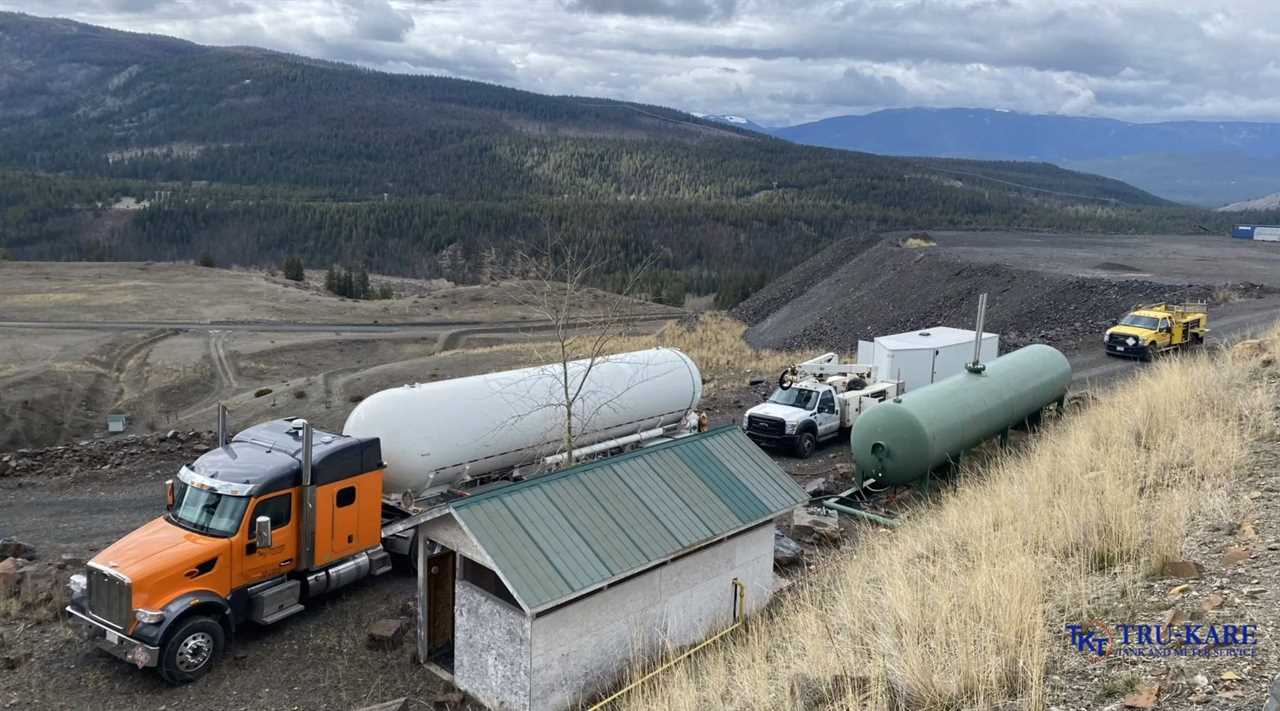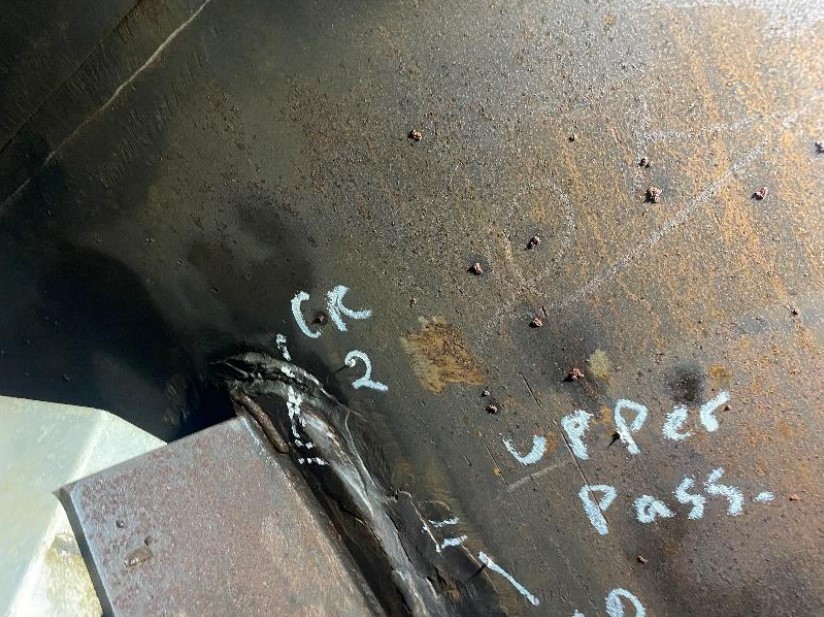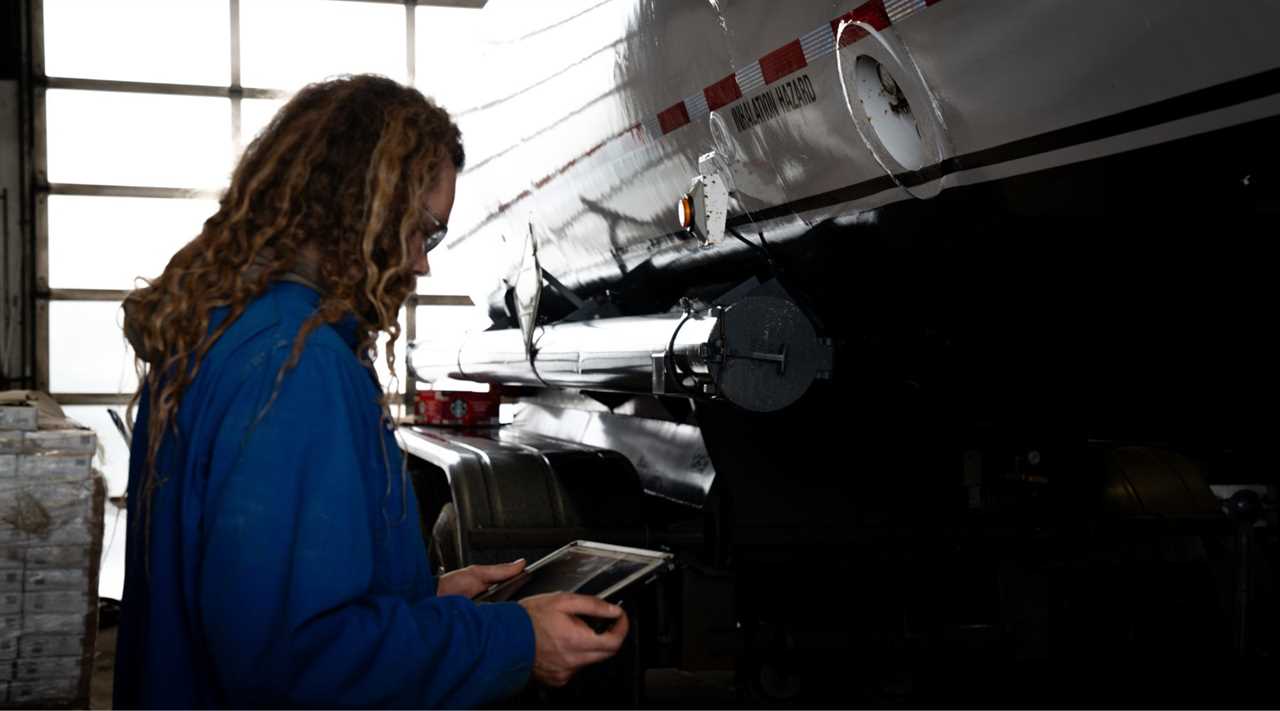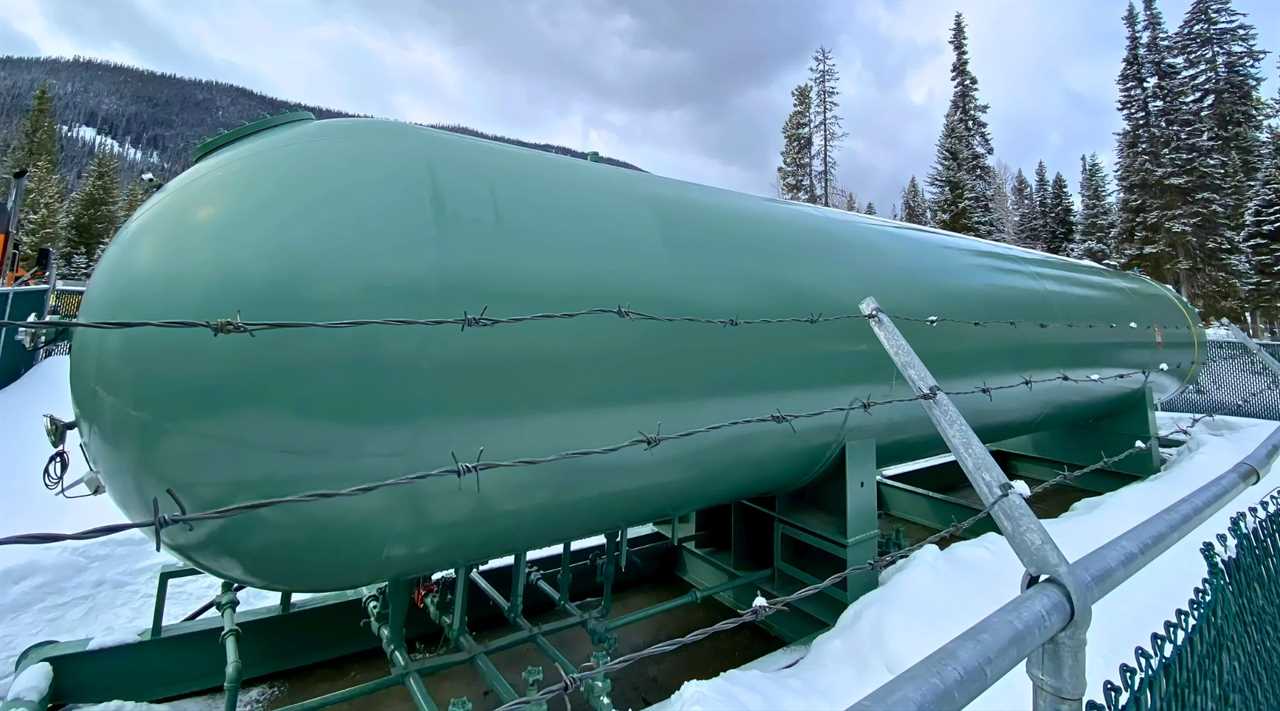You need to conduct regular inspections of your industrial tanks in Alberta to guarantee compliance with the province's regulatory structure and maintain the integrity of your storage tanks. Non-destructive testing techniques like Magnetic Flux Leakage (MFL) and Ultrasonic Testing (UT) are used to identify defects and potential issues. You'll also need to choose a certified inspection service that employs qualified personnel with relevant certifications, such as MT2 and PT2. By understanding the importance of inspections, types of tanks inspected, and techniques used, you can develop an effective management strategy. A closer look at Alberta's regulations and inspection requirements will reveal more.
Listen to the Article Summary
Key Takeaways
• Picture a catastrophic leak from an industrial tank in Alberta, threatening the environment and nearby communities. Regular inspections are the frontline defense against such disasters, ensuring the safe storage of hazardous materials and protecting the province's natural beauty.
• The landscape of industrial tanks in Alberta is diverse, with different types requiring unique inspection frequencies and maintenance strategies to prevent accidents and costly downtime. A one-size-fits-all approach simply won't cut it.
• Imagine being able to peer inside a tank without causing damage, detecting hidden weaknesses and potential hazards. Non-destructive testing techniques like Magnetic Flux Leakage (MFL) and Ultrasonic Testing (UT) make this possible, providing a vital check on tank integrity.
• The people conducting these inspections are the unsung heroes of industrial safety. To do their job effectively, they need to hold relevant certifications and stay up-to-date with the latest regulatory updates and inspection technologies through ongoing training.
• The National Fire Code 2023 and Alberta Safety Codes Authority regulations set the standard for tank installation, removal, and operation in Alberta. Compliance is not optional – it's essential for protecting people, the environment, and businesses.
• Don't risk it – if you need help navigating the complex world of industrial tank inspections in Alberta, reach out to Tru-Kare Tank & Meter Service for expert guidance and support.
Industrial Tank Inspection Importance
Regular industrial tank inspections play an essential role in preventing accidental leaks and guaranteeing the safe storage of substances, including chemicals and petroleum. By prioritizing tank safety practices, you can minimize the risk of operational failures and potential environmental hazards.
Implementing effective risk management strategies during inspections helps you identify potential issues before they become major problems. Leak detection technologies, such as advanced sensors and monitoring systems, enable you to detect even the smallest leaks, assuring prompt action to mitigate any damage.
Conducting environmental impact assessments during inspections also helps you evaluate potential risks to the surrounding ecosystem. This proactive approach enables you to develop strategies to minimize harm and guarantee compliance with local regulations.
Additionally, stakeholder communication methods, including regular reporting and updates, keep all parties informed and aligned with inspection findings and recommendations. By incorporating these measures into your inspection routine, you can guarantee the integrity of your tanks, prevent costly accidents, and maintain a safe and efficient operation.

Types of Storage Tanks Inspected
The diverse range of storage tanks used in industrial settings presents unique inspection challenges, necessitating an extensive understanding of each tank type's specific requirements. As you manage the intricacies of tank inspections, you'll encounter various types of storage tanks, each with distinct inspection needs.
| Tank Type | Inspection Requirements |
|---|---|
| Above Ground Tanks | Regular inspections for signs of corrosion, pitting, and integrity failures; inspection frequency determined by tank size and contents |
| Underground Tanks | Periodic inspections using non-destructive testing techniques to detect leaks, corrosion, and structural damage |
| Flammable Liquids Tanks | Frequent inspections to guarantee compliance with safety regulations, focusing on tank maintenance, piping, and secondary containment systems |
Your understanding of these tank types and their inspection requirements is essential for guaranteeing the safety and integrity of your storage facilities. By familiarizing yourself with the specific needs of each tank type, you'll be better equipped to prioritize tank maintenance, determine inspection frequency, and address potential issues before they become major concerns. This targeted approach will help you maintain compliance with industry standards and extend the lifecycle of your tank infrastructure.
Non-Destructive Testing Techniques Used
Tank inspection protocols rely heavily on non-destructive testing (NDT) techniques to gauge the integrity of industrial storage tanks without causing damage to the structure.
You employ techniques like Magnetic Flux Leakage (MFL) and Ultrasonic Testing (UT) to inspect tank integrity. MFL offers the advantage of rapidly evaluating large surface areas, identifying defects like pitting and corrosion on tank floors. UT applications involve using high-frequency sound waves to measure tank wall thickness and detect internal flaws.
You also conduct Visual Testing (VT) to thoroughly examine tank surfaces for signs of wear, damage, or structural issues. However, VT has limitations, as it may not detect issues that aren't visible to the naked eye.
Liquid Penetrant Testing (PT) techniques are effective for detecting surface-breaking defects by applying a liquid that penetrates cracks, making issues easily visible.
The frequency of inspection depends on factors like tank usage, contents, and environmental conditions. By incorporating these NDT techniques into your inspection routine, you can guarantee the integrity and longevity of your industrial storage tanks, optimizing inspection frequency and reducing the risk of operational failures.
Regular inspections enable you to address potential issues before they become major problems.

Qualifications for Inspection Personnel
Inspection personnel play a critical role in maintaining the integrity and safety of industrial storage tanks, and accordingly, must possess the necessary qualifications to perform their duties effectively.
As an inspector, you'll need to hold relevant certifications, such as MT2 or PT2, which are essential for conducting various non-destructive testing methods. A high school diploma or GED equivalency is typically required, and additional qualifications like NDE/API certifications are considered significant assets.
To stay up-to-date with industry developments, you should also pursue ongoing inspection training and familiarize yourself with the latest inspection technologies. This will help you maneuver through regulatory updates and effectively manage risks associated with industrial tank operations.
Some key qualifications and skills for inspection personnel include:
- Current safety training certifications, such as First Aid, H2S Alive, Confined Space Entry/Rescue, and Fall Protection
- Familiarity with software tools like Microsoft Word, Excel, and Outlook for effective documentation and reporting
- Knowledge of certification pathways and industry standards to verify compliance and effective risk management
Alberta's Regulatory Framework Overview
As you traverse the complexities of industrial tank inspection services in Alberta, understanding the regulatory system is vital for guaranteeing compliance and safety. Alberta's regulatory structure governing storage tank systems is based on the National Fire Code 2023, which emphasizes compliance for installation, alteration, and removal of tanks.
To maneuver compliance challenges, you must be aware of regulatory updates, such as the requirement for a Work Permit for tanks 230 liters or greater and an Annual Operating Permit for tanks 2,500 liters or greater.
Municipal involvement is facilitated through the Alberta Safety Codes Authority (ASCA), which provides services for managing storage tank systems and ensuring regulatory adherence in unaccredited areas.
Effective safety practices are essential, as spill reporting protocols mandate immediate action for spills exceeding 50 liters and require written notification to authorities within 24 hours for significant spills.

National Fire Code Requirements
Within the domain of industrial tank inspection services, strict adherence to National Fire Code requirements is vital for guaranteeing the safety and integrity of storage tank systems.
You must comply with the National Fire Code (NFC) 2023 updates, which mandate that the installation, removal, or abandonment of storage tanks meet NFC(AE) requirements. To validate compliance, you'll need to provide evidence of adherence to the updated regulations as required by the NFC 2023.
Here are some key points to reflect on:
- A new Work Permit is required for tanks with a capacity of 230 liters or greater, emphasizing the significance of regulatory compliance.
- Annual Operating Permits are mandatory for tanks with a capacity of 2,500 liters or greater, regulating their ongoing safe operation.
- The PTMAA certification will no longer be recognized after December 31, 2025, making compliance with the updated National Fire Code vital for all storage tank systems.
To steer through compliance challenges, you'll need to stay up-to-date on regulatory updates, implement sturdy safety protocols, and prioritize tank maintenance.
This includes adjusting inspection frequencies to guarantee ideal tank performance and extending the lifespan of your storage tank infrastructure.
Storage Tank System Management
While guaranteeing the integrity of storage tank infrastructure is a complex task, managing the entire system effectively is equally essential. As a storage tank owner or operator in Alberta, you must prioritize regulatory compliance, tank ownership, and maintenance practices to minimize environmental impact and guarantee spill prevention.
| Storage Tank System Management Requirements | Description |
|---|---|
| Annual Operating Permits | Required for tanks of 2,500 liters or greater |
| New Work Permits | Required for tanks of 230 liters or greater |
| PTMAA Certification Recognition | Mandatory compliance with National Fire Code 2023 by December 31, 2025 |
| Ownership Change Reporting | Fillable form available for reporting changes in storage tank ownership |
You must also be aware of the regulatory requirements for spill reporting, which mandate immediate notification to authorities for spills exceeding 50 liters, followed by written notifications within 24 hours for significant incidents. Historical record searches for locations with storage tanks are available for a $20 fee, providing critical information on past tank systems. Effective storage tank system management is imperative for guaranteeing compliance, preventing spills, and minimizing environmental impact.
Calibration, Audit and Testing Methods
Calibration is a critical component of industrial tank maintenance, and it plays an essential role in guaranteeing the accuracy of storage capacity and volume measurements.
You need to calibrate your tanks regularly to comply with local regulations and standards. The calibration process involves volumetric tank strapping, which provides precise calculations of liquid volumes based on tank dimensions and fluid characteristics.
To uphold the integrity of your tanks, you should also conduct thorough audits and testing. Some of the key methods include:
- Magnetic Flux Leakage (MFL) and Ultrasonic Testing (UT) to evaluate the condition of tank floors without damaging the structure
- Non-destructive testing techniques to detect potential defects and minimize risks associated with operational failures
- Regular inspections to identify potential leaks and integrity issues, helping to prevent costly environmental cleanups and fines

Benefits of Regular Tank Inspections
Regularly inspecting your industrial tanks is essential for safeguarding against accidental leaks, which can result in costly decontamination efforts and devastating environmental consequences. By doing so, you'll not only protect the environment but also reap numerous benefits that can positively impact your bottom line.
| Benefits | Description | Impact |
|---|---|---|
| Cost Savings | Reduce decontamination costs and extend tank lifespan | Lower operational expenses |
| Environmental Protection | Prevent leaks and minimize ecological damage | Improved reputation, reduced liability |
| Regulatory Compliance | Guarantee adherence to local regulations, avoiding fines and penalties | Reduced risk of non-compliance |
Regular tank inspections also facilitate maintenance planning, enabling you to identify and address issues before they become major problems. This proactive approach leads to significant safety improvements, protecting both personnel and the surrounding environment. By prioritizing regular inspections, you'll be able to optimize your tank's performance, minimize downtime, and maintain a competitive edge in your industry. By investing in regular tank inspections, you're committing to a safer, more responsible, and more efficient operation.
Choosing a Certified Inspection Service
When selecting a tank inspection service, you want to guarantee that the company you hire has the necessary proficiency and qualifications to do the job right. A certified inspection service assures adherence to industry regulations and quality standards, such as the API Standard 653.
You'll want to verify the service provider's qualifications and certifications, like MT2 or PT2, to ascertain they possess the necessary knowledge for specific inspection techniques.
To make an informed decision, consider the following key factors:
- Service provider comparison: Research and compare different inspection services to find one that meets your specific needs and has a proven track record of experience with various types of tanks.
- Inspection report analysis: Confirm the service provides timely and detailed reporting of findings, including recommendations for repairs or maintenance to maintain tank integrity.
- Industry technology trends: Look for a service that stays up-to-date with the latest industry technology trends, such as advanced non-destructive testing methods like Magnetic Flux Leakage (MFL) and Ultrasonic Testing (UT).
Frequently Asked Questions
What Is the Inspection Code for Storage Tanks?
API Standard 653 is the inspection code for above-ground storage tanks, covering tank integrity, inspection methods, and regulatory compliance to ensure safety standards and proper tank maintenance.
How Often Should You Get a Sp001 Tank Inspection?
An SP001 tank inspection should be scheduled every five years to maintain compliance with industry standards and regulations, ensuring proper tank maintenance. Regular inspections can help identify and address potential issues, such as leaks, and reduce costs associated with decontamination.
How Often Do Tanks Need to Be Inspected?
Tank inspection frequency depends on several factors, including tank capacity, usage, and environment, to ensure tank integrity and regulatory compliance. Regular inspections should be conducted following standardized procedures for effective tank maintenance.
What Do You Check for When Inspecting a Tank?
Inspecting a tank involves evaluating its condition to ensure integrity and regulatory compliance. Specialized inspection techniques are used to minimize environmental impact.
Conclusion
Imagine a catastrophic tank failure, with oil spilling into the environment, contaminating waterways, and threatening the safety of your employees and community. It's a devastating scenario that can be significantly reduced with regular industrial tank inspections. By prioritizing inspections, you can ensure the integrity and safety of your tank facilities. In fact, research shows that regular inspections can decrease the likelihood of tank failures by up to 80%. Don't wait until it's too late; take proactive steps to safeguard your operations. If you need help implementing a comprehensive inspection program, reach out to Tru-Kare Tank & Meter Service, a certified and trusted partner in maintaining the safety and reliability of your tank facilities.

